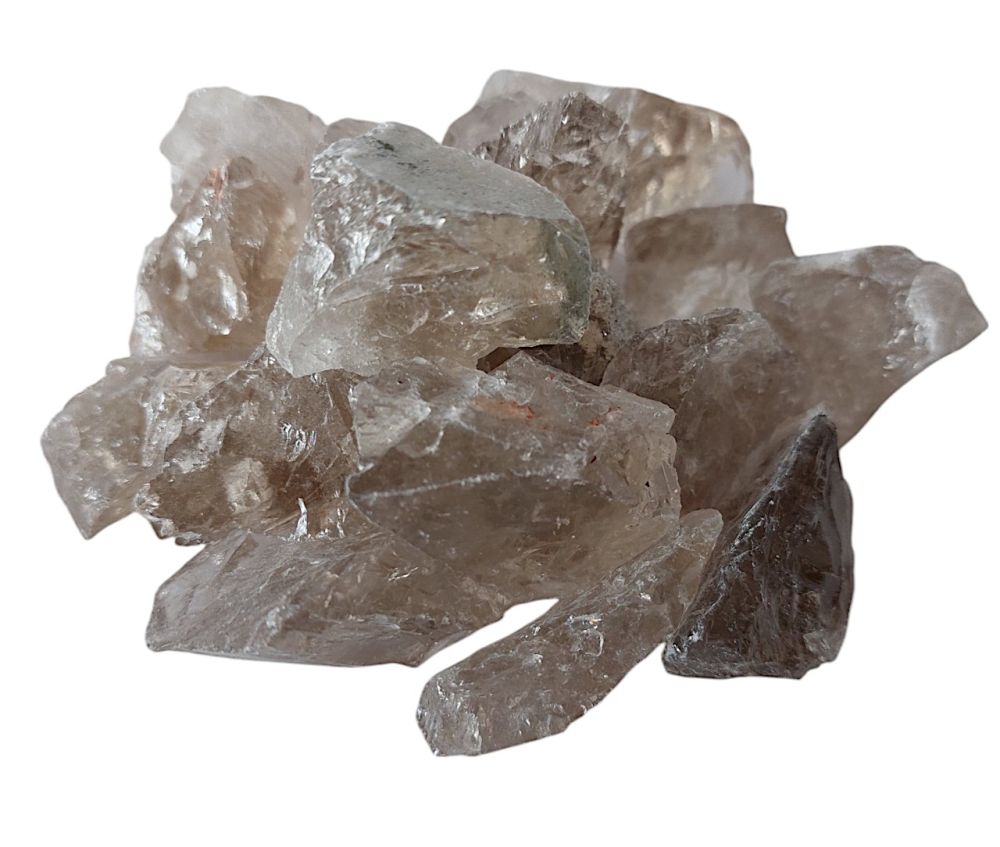We use cookies to make your experience better.
TimmersGems has a new website, existing customers also need to register again.
Smoky quartz (fairly clear pieces) from Corinth/Brazil.
Beautiful pieces at a competitive price!
Availability:
In stock
SKU
122134
Smoky quartz is a variety of quartz. The colour is smoky brown to almost black, translucent. Very dark varieties are called morion. Smoky quartz is most common in cavities in intrusive rocks and high-grade metamorphic rocks. Smoky quartz is rare in sedimentary rocks and effusive rocks. Localities include the Alps, Brazil, Russia, Mexico, India, Ireland, Zimbabwe, Afghanistan and the USA. The colour of smoky quartz is caused by aluminium in the crystal lattice in combination with ionising radiation. The aluminium replaces the silicon in the crystal structure, forming the complex [AlO₄] instead of [SiO₄]. In order to compensate for the resulting charge difference, small monovalent cations such as hydrogen, lithium or sodium are simultaneously incorporated into the crystal structure during crystal growth. Under the influence of ionising radiation, the electron of the [AlO₄⁻] complex moves to a cation, and a colour centre is created. This process normally only occurs below 50 °C. At higher temperatures, the breakdown of the colour centres occurs faster than their creation. The source of the ionising radiation is usually potassium-40, the surrounding rock. The colour of smoky quartz, therefore, occurs long after the crystals have formed and can take several million years. This is also the reason that most smoky quartz is formed in feldspar-rich rocks such as granite. When heated above 200°C, smoky quartz will lose its colour. Irradiating clear quartz (rock crystal) with X-rays or gamma radiation almost always produces smoky quartz. This method is also used to make smoky quartz from colourless quartz. In ancient times, this stone warned soldiers in battle if it turned dark. Smoky quartz is still used for rosaries and crucifixes. A number of medicinal properties are attributed to smoky quartz; it is said to help with digestive complaints, stress, grief and a desire to have children. According to various literature, the mineral belongs to the zodiac sign Libra.
| Dimensions | Divers |
|---|---|
| Country of Manufacture | Brazil |












